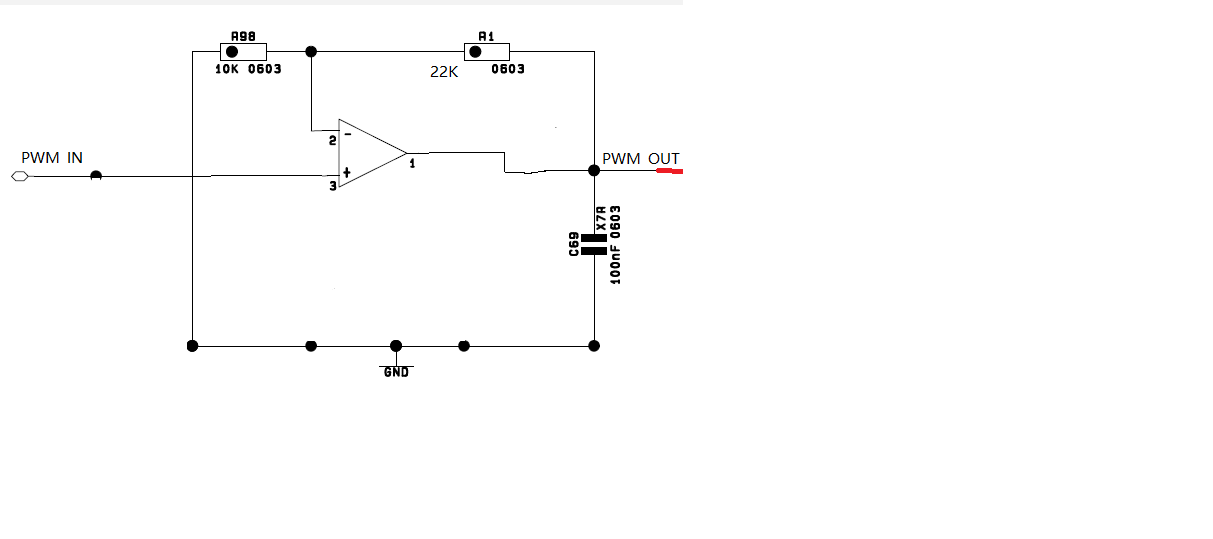Hi,
Now use TLV2372(VDD=12V)to enlarge high level voltage of pwm from 3.3V to about 10.7V ,frequency range:1K--25KHZ
1.Is it necessary to connect a small capacitor in parallel with R1? if really need capacitor ,how much calculate capacitance value?
2.Is it necessary to connect a resistor in series between PWM_IN and positive input(pin3)? if really need resistor , how much calculate resistor value?
Thanks a lot!


